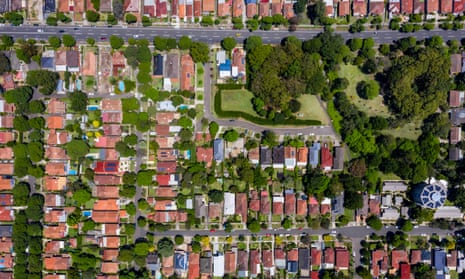The Australian housing market is going gangbusters and all the signs are the boom is here to stay.
When property data firm CoreLogic tracked 1,191 auctions last weekend, it found 86.1 per cent of properties that went under the hammer sold, a 2.3 per cent increase on the week before.
The company’s head of research, Tim Lawless, says it is a result not seen since 2015.
“When auction clearance rates are high, you expect house prices to be rising and vice-versa,” Lawless said. “At the moment we’re seeing clearance rates well above 80 per cent. The last time we saw the same was in 2015, but you have to go back a decade to see auction markets as strong as this.”
House prices continued to grow strongly through January with CoreLogic’s Home Value Index recording price growth of 0.9 per cent nationally and regional areas growing at rates double that recorded in cities.
Nerida Conisbee, chief economist at global real estate company REA Group, said the situation was driven by a combination of cheap money, a high savings rate among those who held onto a job through 2020, a receding pandemic and an exodus from densely populated cities into regional areas.
“You’re watching a realignment as people work out where they want to live and where they want to be employed,” Conisbee said.
“The recession we saw with the pandemic is not quite like what we’ve seen elsewhere in the GFC where it was finance-led. What that’s meant for property is there’s no shortage of money. Interest rates are at incredible lows and those who had jobs were forced to save during rounds of lockdowns.”
However, while property values in regional areas like south Queensland and northern New South Wales have been growing, Conisbee said units and apartments in city areas have remained flat thanks to lower migration.
“When you have a look across Australia, you’re seeing price growth everywhere, but at a suburban level, particularly those closer to universities, rents have dropped and values have dropped,” she said.
The activity comes off record low interest rates of 0.1 per cent, a situation the Reserve Bank of Australia (RBA) expects to hold until 2024.
RBA governor Philip Lowe shrugged off any concerns that the country may be facing the start of a new housing bubble earlier this month, saying the growth was good news for an economy recovering in the wake of the pandemic.
“There’s a lot of focus at the moment on the fact that housing prices are rising again, and the stock market has been strong,” Lowe said. “Well, the national house price index today is where it was four years ago … and the equity market, we’re back to where we were at the beginning of last year.”
Other key factors include the government’s pandemic response plan.
To date, around 82,000 homeowners have subscribed to the homebuilder scheme at a cost of $2 billion, while other initiatives like the cash-flow boost program directly injected sums up to $100,000 into small-to-medium businesses earning less than $50m a year.
Prof Hal Pawson from the University of New South Wales said this “cheap money” has been a big driver in the recent price spike – and one that may prove disadvantageous to renters and those living in regional areas.
“Cheap money is the most important thing by far,” Pawson said.
“It’s the ability to take out $150,000 more on a mortgage than you could have had a year ago on the same salary. The concern about this is that, for lower income earners in regional locations, they’re going to be put under pressure as the result of these changes and it doesn’t flow through [to renters] immediately.”
The federal government is looking to boost the situation further by winding back responsible lending laws, Martin North, the principal of Digital Finance Analytics, said. The gains were not without risk as they relied on the “massive” creation of new debts, he added.
“Scott Morrison said three years ago he wouldn’t let prices drop and that is proving to be true, but we’re building these rises off the back of massive debts.
“Banks are lending six or seven times average incomes. They’re doing what they were doing before the royal commission. This is an unsustainable and a highly risky extension when we should be investing in more sustainable or longer-term solutions.”
Dr Cameron Murray, a post-doctoral fellow at the Henry Halloran Trust at the University of Sydney, said what is happening in Australia has to be seen in a global context.
Even without the pandemic, he says, the world is experiencing a global housing boom, while central banks everywhere have come to view the housing market – and the associated consumer spending – as a key plank of their economies.
“Our macro-stabilisation policy works by juicing house prices,” Murray said.
“This is a policy most central banks have adopted. Secondly, we’re just at that point in the cycle. The best parallel to the situation now is 2004. I think we’re in a very similar phase right now. Sydney boomed early, then it tapered off. Then the rest of the country shot up for four years in line with the broad global house price cycle.
“The economy runs in cycles and a lot of regional Australia hasn’t been through that boom cycle. Now it’s their turn.”
